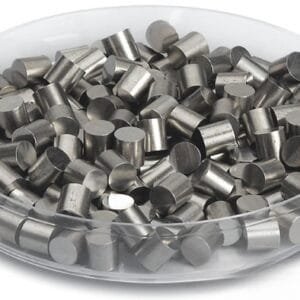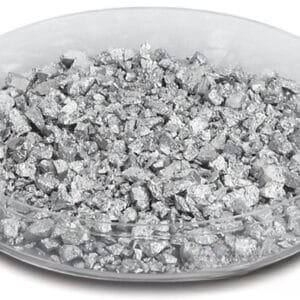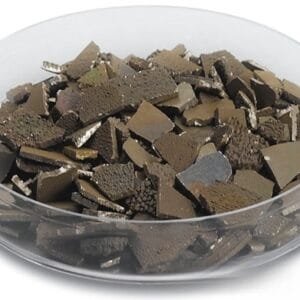Europium(III) Oxide Evaporation Materials Overview
TFM specializes in the production and supply of high-purity europium(III) oxide evaporation materials, identified by the chemical formula Eu2O3. These materials are essential in deposition processes, contributing to the formation of high-quality films. With purity levels reaching up to 99.9995%, TFM ensures product consistency and reliability through rigorous quality assurance protocols.
Related Products: Europium Evaporation Materials
Europium(III) Oxide Evaporation Materials Specifications
| Material Type | Europium(III) Oxide |
| Form | Evaporation Materials |
| Symbol | Eu2O3 |
| Color/Appearance | White to light-pink Solid |
| Melting Point | 2,350 °C |
| Density | 7.42 g/cm3 |
| Purity | 99.5% ~ 99.99% |
| Shape | Powder/ Granule/ Custom-made |
Applications of Europium(III) Oxide Evaporation Materials
Europium(III) oxide evaporation materials are widely utilized in various advanced applications:
- Deposition Processes: Crucial for semiconductor deposition, chemical vapor deposition (CVD), and physical vapor deposition (PVD).
- Optical Uses: Employed in coatings for wear protection, decorative finishes, and display technologies.
Packaging Information
TFM ensures that europium(III) oxide evaporation materials are meticulously labeled and tagged for easy identification and to maintain stringent quality control. All products are packaged with care to prevent damage during storage and transportation.
Contact Us
TFM is a leading provider of high-purity europium(III) oxide evaporation materials, available in various forms such as tablets, granules, rods, and wires. We also offer custom shapes and quantities to meet your specific needs. In addition to evaporation materials, TFM supplies evaporation sources, boats, filaments, crucibles, heaters, and e-beam crucible liners. Please contact us for current pricing or to inquire about materials not listed.


 MSDS File
MSDS File



Reviews
There are no reviews yet.